India is going to be among the world's top 3 economies – the third largest economy in the world by 2027 with GDP crossing the $5 trillion mark and then move on to achieving $7 trillion in GDP by 2030. This achievement would be aided by all round growth reinforced by major economic policy stances that intend to create an environment that will be most conducive to the growth process. A significant part of this growth will come from the massive development and expansions in the information and communication technology (ICT) segment. A chunk of the growth will come from the growth in manufacturing sector which again would be an outcome of the growth and development of the rural sector, increased urbanization, higher job creation and of course the resultant larger demand for goods and services. But behind all these there will be something at play – as a growth driver as well as an outcome of the growth, and that would be the demand for power.
We would need more power to light up our villages and cities, more power to run the factories, more power to feed the data centers, more power to run electric vehicles, more power for irrigation, more power for communication and most importantly more power to fight the adversities caused by the whims of mother nature … well not so much whims as the consequence of human activities that led to such adverse changes in the global weather. Even the naivest person with no clue about economy will not find it hard to understand that the demand for power would be tremendous. Let's dig in a bit deeper to understand what is the real scenario when it comes to powering up the nation
In 2023, the Ministry of Power (MoP) had projected a peak power demand of 229 GW during the summer. The peak exceeded projections, but much later during the year than expected. On a year on year (yoy) basis, power demand during Aug-Oct was 20% higher [1]. While rise in economic activities drove the power demand up, the role of climate change can neither be ruled out nor overlooked. The climatic changes are deteriorating, progressively, every year.
This year, so far, there has been several heat waves all across the country – some were so bad that besides issuing heat wave alert people across the country were advised to stay indoors. Schools and colleges were shut earlier than their usual dates for summer vacation. Air conditions had been working overtime leading to a huge daily demand for electricity. To add to the situation the manufacturing sector was in full swing. Data centers are being developed. The combined effect was a boost in electricity demand by 8.5%. Whereas, the drought conditions which emerged In India in 2023 following the onset of El Niño, continued in 2024, resulting in an 8% yoy decline in electricity generation from hydropower in the first half of 2024 [2]. The obvious outcome was a rise in coal-fired electricity generation, which increased by 10% in the first half of 2024 [3].
The summers are getting severe here and longer too. Even if rains arrive on time the climate generally remains hot across the country baring a few regions.
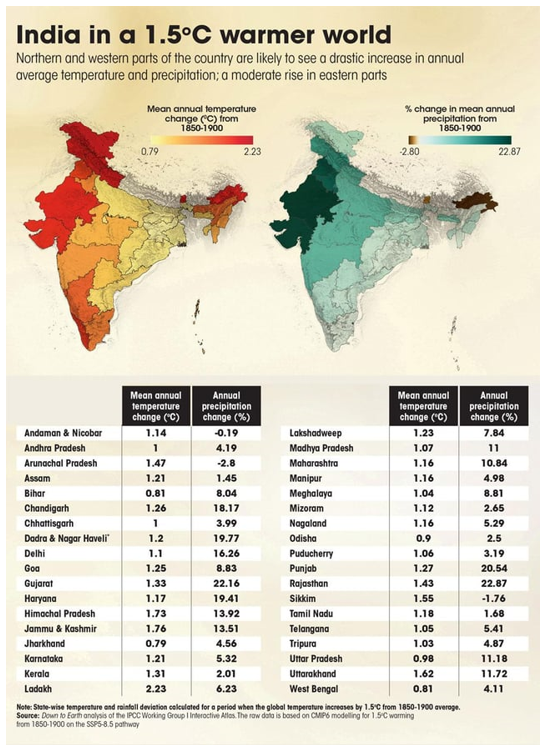
Figure 1: Climatic Changes in India [4]
So, the demand for cooling and hence electricity remains strong during most part of the year and spikes particularly during peak summer months.
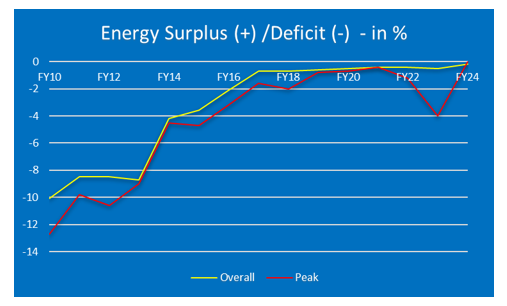
Figure 2: Power Supply Position FY10-FY24 - Updated till May 2023 (Source: Ministry of Power & EFL Research)
Where are we in terms of Energy Transition?
This summer surge in demand for electricity presents significant challenges to our country's transition to a clean and green energy. Such demand surges require power generation that can be swiftly and easily ramped up in response. Where to look other than Thermal power? Burn more coal? But of course …
The bottomline is – we are still hung up on fossil fuels that make up more than 50% of our fuel input for power generation.
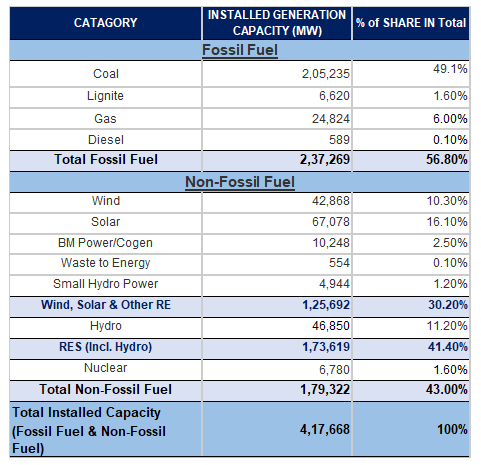
Figure 3: India's Power Generation Scenario (Source: Ministry of Power & EFL Research)
We invariably turn to fossil fuel-based generation to gratify the surge in power demand since we are still under equipped or ill equipped to source it from renewables (the required level of expansion has not happened). This, in turn, increases carbon emissions. India's declared target (at COP26) for 2030 decarbonization is highly ambitious - 50% decarbonization of energy alongside achievement of 500 GW of fossil fuel-free generation capacity, an unexpectedly large increase above its Paris commitment [5].

Keeping in view the summer electricity demand, the power minister in 2023 had asked for thermal generators to be run at full capacity and decide on 6% blending with imported coal to cover any domestic coal supply shortfall [1]. According to the IEA report, “coal-fired output is set to remain resilient in 2024 due to strong electricity demand growth, hindering a decline in global power sector CO2 emissions” [6].

Figure 4: Electricity Generation – Updated till May 2023 [7]
Let's be honest. The power demand surge is here to stay. More technology, more mobility, more urbanization will always mean more power demand. But power generation from renewable source is not keeping pace. Sunlight, wind and water are again heavily dependent on the vagaries of nature. As the IEA report says, irrespective of rapid growth of renewables, the sharp increase in electricity consumption, especially in China and India, is leading to higher use of coal for power generation to meet demand and the trend is unlikely to change any time soon and India and Southeast Asia will continue contribute heavily towards emissions from the power sector due to this [1]. So, a decisive switchover to renewables will take a long while to happen … It will happen eventually but whether or not the targets would be met on time is still not clear.
Meanwhile let's look at our potential in renewables….
Solar Power Potential
India's power generation capacity is 442.87 GW, with solar power contributing around 18.5% with the potential to generate 750 GW of solar power. Yet only 81.8 GW capacity has been reached. The Government has ambitious plans to transform India's energy landscape. The goal is to reduce electricity bills to zero by encouraging in widespread adoption of rooftop solarization of households through installation of rooftop solar panels. Only 11.1 GW of rooftop solar panels were installed till 2023 end, compared to a target of 40 GW by 2022. There exists significant scope for expansion. While providing for power consumption this scheme also paves the way for earning through sale of excess power to the grid – a concept akin to the vehicle-2-grid technology that is being implemented in US.
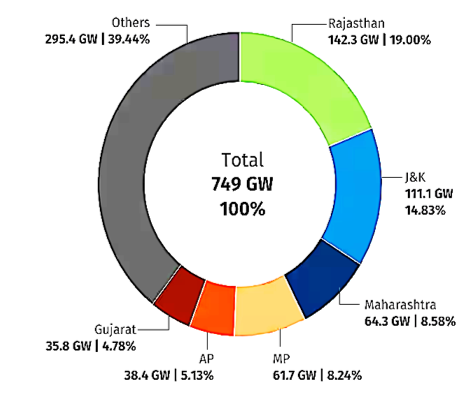
Figure 5: Solar Power Potential (Source: Moneycontrol, PIB- Ministry of Power Press Release)
Hydro Power Potential
India's hydropower potential is 1,45,000 MW approx. At 60% load factor, around 85,000 MW power demand can be met. For scaling its power generation capacity, India is taking steps to significantly enhance its hydropower capacity, with the target of adding 11.9 GW in the next 5 years as part of its bigger strategy to boost renewable energy production. The north eastern states have substantial potential [8].
Presently, 37 hydropower projects are underway, having an estimated collective capacity to generate 15 GW. Plans are being developed for projects that will contribute an additional 50 GW. North-Eastern States have the richest hydropower potential that must be harnessed for achieving the ambitious national target of 500 GW of renewable energy by 2030.
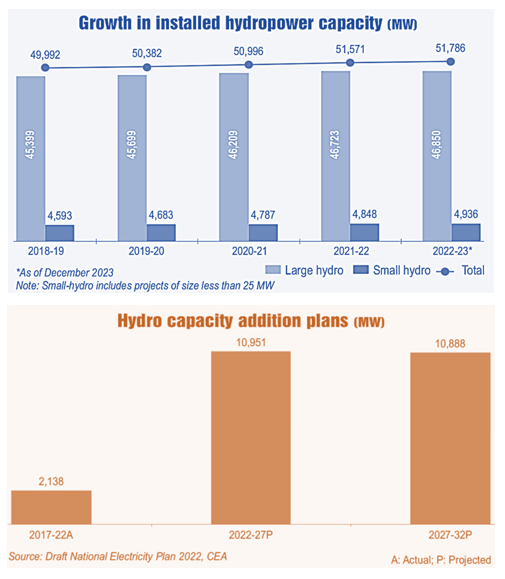
Figure 6: Hydro Power Potential (ET Energy, The Sentinel, Ministry of Power, CEA)
Wind Energy Potential
The wind energy potential in India is very high, estimated at 695.5GW at 120m in height. Wind Energy holds the major portion of 36.7 % of total RE installed capacity. The country currently has the fourth-highest wind installed capacity in the world, with a total installed capacity of 42.868 GW as of May 2023 [9].
To sum it up, India neither lacks the intent nor the ability to transition to green energy but growing population, increased urbanization, higher consumption, increased mobility and rapidly picking up digital transformation continuously feed the insatiable hunger for power and the urgency of the need to meet this hunger makes the country turn over-and-over towards coal as the ready and easily accessible source of power generation, pushing up emission and pushing back the transition. Stronger efforts are underway but it will take time … how much, remains a question.
References
L. Powell, A. Sati and V. K. Tomar, "Summer power demand surge: Challenges for India's energy transition: Observer Research Foundation (ORF)," 27 Dec 2023. [Online]. Available: https://www.orfonline.org/expert-speak/summer-power-demand-surge. [Accessed 22 Jul 2024].
Richa Sharma, "India to post an 8% rise in electricity consumption in 2024: IEA - Business Today," 19 Jul 2024. [Online]. Available: https://www.businesstoday.in/industry/energy/story/india-to-post-an-8-rise-in-electricity-consumption-in-2024-iea-437788-2024-07-19. [Accessed 29 Jul 2024].
R. R. KALA, "Electricity prices fell 10% in H1 2024 despite unprecedented surge in demand: IEA - The Hindu Businessline," 19 Jul 2024. [Online]. Available: R. R. KALA, "Electricity prices fell 10% in H1 2024 despite unprecedented surge in demand: IEA - The Hindu Businessline," 19 Jul 2024. [Online]. Available: https://www.thehindubusinessline.com/news/electricity-prices-fell-10-in-h1-2024-despite-unprecedented-surge-in-demand-iea/article68422249.ece. [Accessed 29 Jul 2024].
A. Sangomla and P. Roy, "Clear signs: 1.5°C warmer world to be catastrophic for India: Down to Earth," 01 Aug 2022. [Online]. Available: https://www.downtoearth.org.in/climate-change/clear-signs-1-5-c-warmer-world-to-be-catastrophic-for-india-84087. [Accessed 30 Jun 2024].
Energy Transitions Commission, "Roadmap to India's 2030 Decarbonization Target - ETC," Aug 2022. [Online]. Available: https://www.energy-transitions.org/publications/roadmap-to-indias-2030-decarbonization-target/#:~:text=India's%20decarbonization%20target,free%20generating%20capacity%20by%202030. [Accessed 30 Jul 2024].
Gas, Coal and Power Markets (GCP) Division, IEA, "Electricity Mid-Year Update," International Energy Agency (IEA), Paris, France, 2024.
Ministry Of Power, GoI, "Power Sector at a Glance ALL INDIA," 12 Jun 2023. [Online]. Available: https://powermin.gov.in/en/content/power-sector-glance-all-india. [Accessed 29 Jul 2024].
The Sentinel , "Northeast states have richest hydropower potential in country: Union Power Minister," 10 Jul 2024. [Online]. Available: https://www.sentinelassam.com/cities/guwahati-city/northeast-states-have-richest-hydropower-potential-in-country-union-power-minister. [Accessed 30 Jul 2024].
PIB - Ministry of New and Renewable Energy, "Year End Review 2023 of Ministry of New & Renewable Energy," 03 Jan 2024. [Online]. Available: https://pib.gov.in/PressReleasePage.aspx?PRID=1992732#:~:text=India%20stands%204th%20globally%20in,%2D%20Renewable%20capacity%20statistics%202023). [Accessed 29 Jul 2024].













